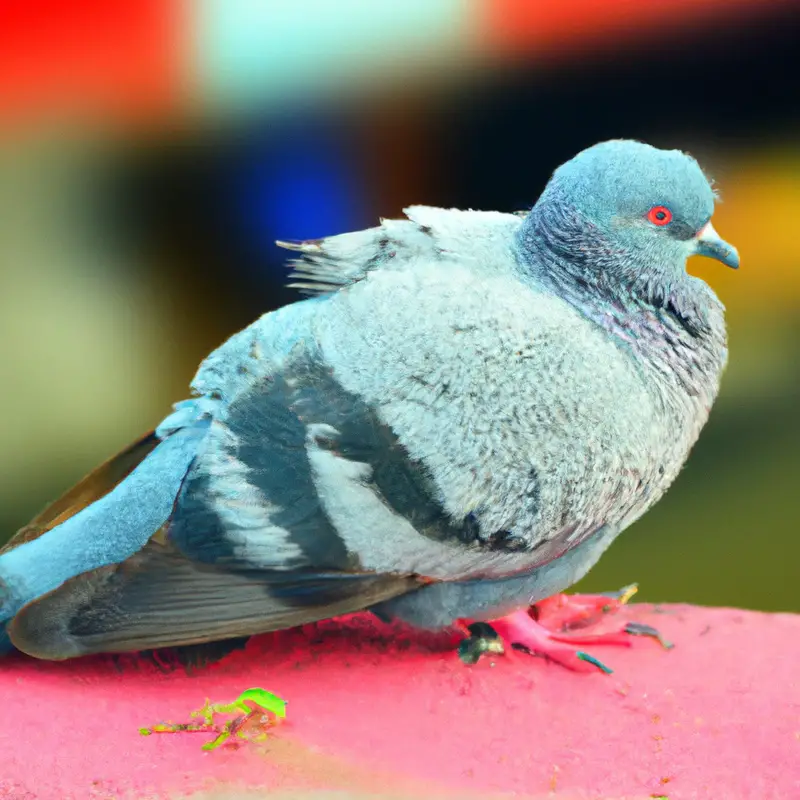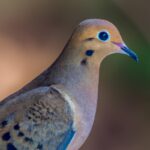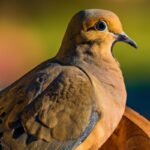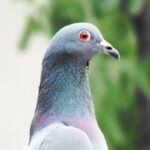Key Takeaways:
- Mourning dove hunting season in California is regulated and requires proper permits and licenses.
- Hunting methods for mourning dove in California can include both shooting and decoy strategies.
- Bag limits and possession limits are in place to ensure sustainable hunting practices for mourning dove.
- It is important for hunters to be aware of the specific regulations and guidelines for hunting mourning dove in California before engaging in the activity.
Are you ready for an exhilarating hunting adventure right here in California? If you’re a fan of feathered targets, then pursuing the elusive mourning dove is an experience you won’t want to miss.
As an expert in the field, I’ve spent countless hours observing and hunting these magnificent birds.
In this blog article, I’ll be sharing my knowledge and expertise on understanding the mourning dove species, hunting regulations and licensing in California, essential gear and equipment needed for a successful hunt, strategies for a fruitful experience, and even how to process and cook this delectable game. Get ready to embark on an unforgettable journey into the world of mourning dove hunting in the Golden State!
Topic | Information |
|---|---|
Species | Mourning Dove (Zenaida macroura) |
Hunting Season | September 1 to 15 (early season) November 26 to December 24 (late season) |
Bag Limit | 15 doves per day (early season) 10 doves per day (late season) |
Hunting Hours | Half an hour before sunrise to sunset |
License Required | California Hunting License and Harvest Information Program (HIP) Validation |
Shot Type | Non-toxic shot (size 7.5 or smaller) |
Shotgun Gauge | No gauge restrictions |
Legal Methods | Shotgun only, must be plugged to hold no more than 3 shells, no baiting or use of live decoys |
Additional Requirements | Hunters must complete a HIP survey online or by phone prior to hunting |
Location Restrictions | Specific areas are closed to dove hunting, check regulations for details |
Special Regulations | Some hunting areas may have additional restrictions, consult local regulations |
Understanding the Mourning Dove Species
Physical Characteristics
The mourning dove is a small bird with a plump body and a long, pointed tail. Its feathers are primarily grayish-brown, which helps it blend in with its surroundings.
The dove has a small, round head with a distinctive black spot on its cheek.
Its beak is slender and tapered, ideal for feeding on seeds and grains. The dove’s wings are long and narrow, allowing it to fly swiftly and gracefully through the air.
Overall, the physical characteristics of the mourning dove are well-suited to its environment and lifestyle.
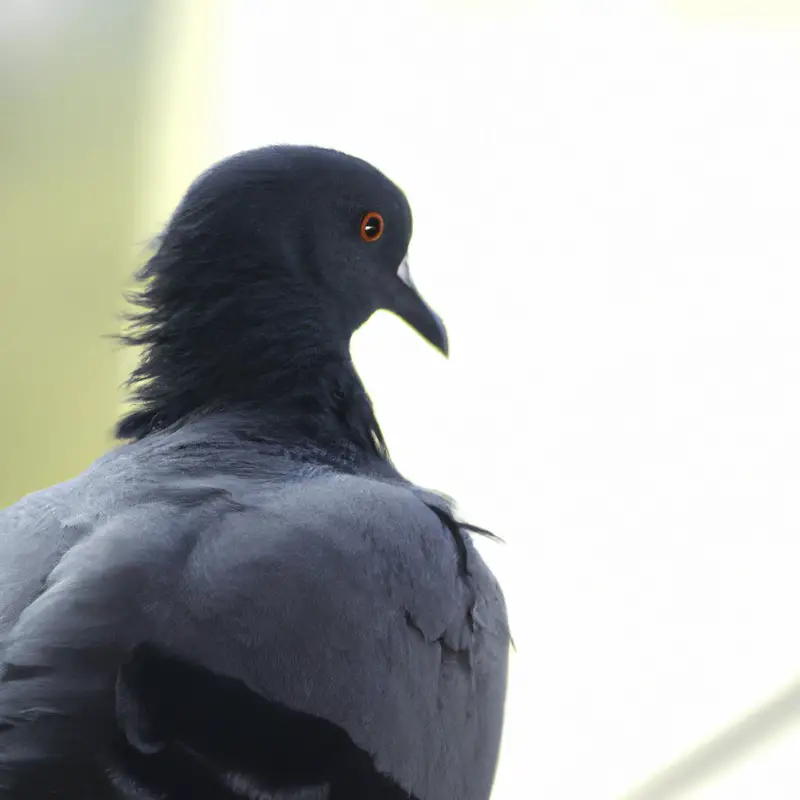
Distribution and Habitat
Mourning doves are widely distributed throughout North America, including California.
They can be found in a variety of habitats, including grasslands, farmland, open woodlands, and suburban areas.
These birds prefer open spaces with access to water sources, as they rely on a diet of seeds and grains.
Mourning doves are adaptable and can be seen in both rural and urban environments.
They often build nests in trees, but they can also use man-made structures like ledges and birdhouses.
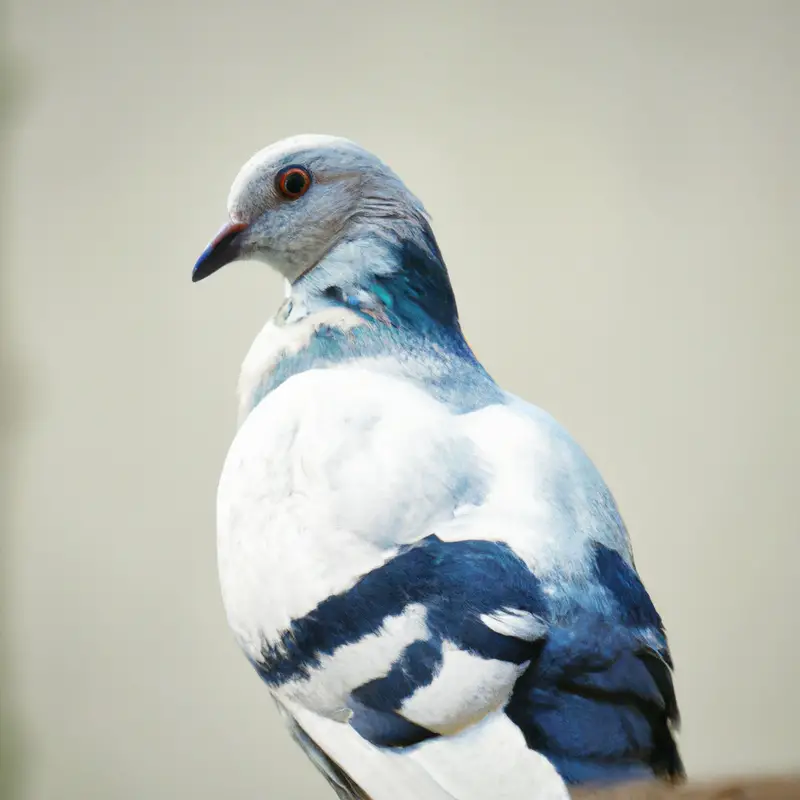
Behavior and Feeding Habits
Mourning doves are known for their gentle nature and distinctive mourning call. They are usually seen in pairs or small groups, and are highly social birds.
When it comes to behavior, mourning doves are ground-dwelling birds and prefer to walk or run rather than hopping.
They are excellent fliers, reaching speeds up to 40 miles per hour. In terms of feeding habits, mourning doves primarily eat seeds and grains.
They forage on the ground, often in open areas such as fields, gardens, and roadsides.
They have a unique way of feeding called “head dipping,” where they quickly dip their heads to pick up seeds. Mourning doves also drink frequently, and can be seen visiting birdbaths or puddles for water.
Overall, mourning doves have interesting behavior patterns and specific feeding habits that make them a fascinating species to observe in the wild.
Hunting Regulations and Licensing in California
Overview of California’s Hunting Seasons and Zones
California offers a variety of hunting seasons and zones to meet the needs of hunters.
These seasons and zones are designed to manage wildlife populations and ensure sustainable hunting practices.
Each hunting season has specific dates and regulations that must be followed.
California is home to diverse habitats, including forests, wetlands, and grasslands, which offer unique hunting opportunities.
It is important for hunters to research and understand the specific hunting seasons and zones that apply to their desired game species and location.
Additionally, hunters should always obtain the necessary licenses and permits before participating in any hunting activities in California.
Understanding Bag Limits and Possession Limits
Understanding bag limits and possession limits is important to ensure compliance with hunting regulations.
Bag limits refer to the number of game animals or birds an individual is allowed to harvest in a single day.
It is crucial to know the bag limits for the specific species you are hunting, as exceeding these limits is illegal.
Possession limits, on the other hand, restrict the total number of game animals or birds a hunter can have in their possession at any given time.
This includes both fresh and processed game.
It is essential to know and adhere to these limits to avoid penalties and maintain sustainable hunting practices.
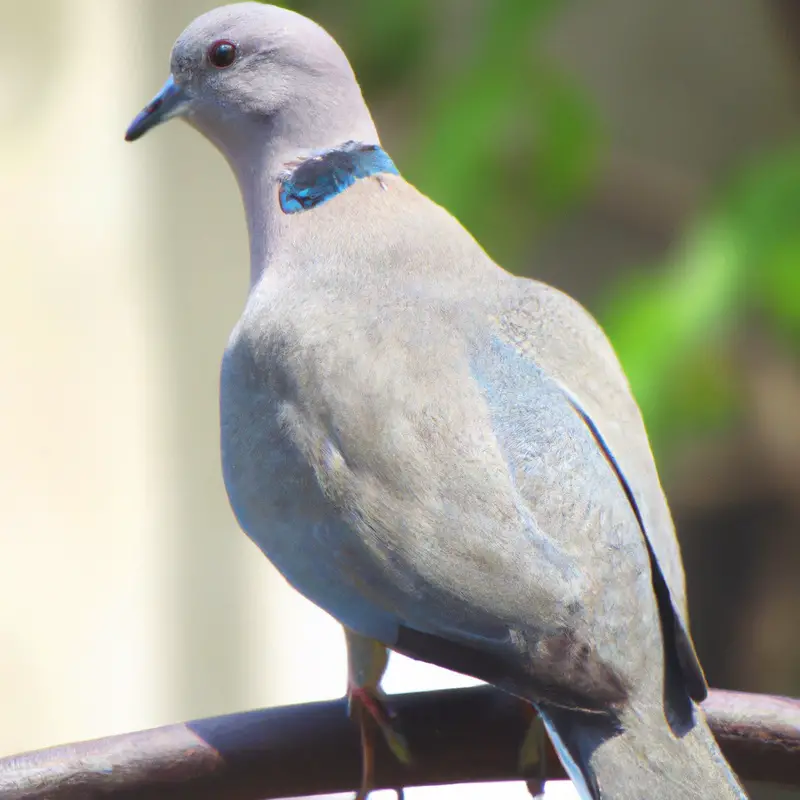
Required Hunting Licenses and Permits
To legally hunt mourning doves in California, you must have the appropriate licenses and permits. The first requirement is a valid California hunting license, which can be obtained online or at authorized vendors.
Additionally, you will need an Upland Game Bird Validation, which specifically allows you to hunt mourning doves.
For hunters under the age of 18, a Junior Hunting License is necessary. It’s important to make sure you have these licenses and permits before heading out into the field to avoid any legal issues.
Essential Gear and Equipment for Mourning Dove Hunting
Firearms and Ammunition Regulations
When it comes to firearms and ammunition regulations for mourning dove hunting in California, there are a few key points to keep in mind.
- Firearms: You must have a valid hunting license to possess a firearm while hunting mourning doves. Additionally, the firearm must comply with all state and federal laws, including those regarding barrel length and capacity.
- Ammunition: Nonlead ammunition is required when hunting mourning doves in designated areas, due to concerns about lead contamination. Be sure to check the specific regulations for the area you plan to hunt in, as they may vary.
- Possession Limits: It’s important to be aware of the possession limits for firearms and ammunition while hunting mourning doves. These limits are designed to ensure sustainability and conservation of the bird population.
By familiarizing yourself with these regulations and staying compliant, you can enjoy a safe and responsible mourning dove hunting experience in California.
Recommended Shotgun Gauge and Choke Selection
When it comes to choosing the right shotgun gauge for mourning dove hunting, it’s recommended to go with a 20 or 12 gauge.
These gauges offer sufficient power and versatility for hunting these fast-flying birds.
As for choke selection, opt for a modified or improved cylinder choke.
These chokes provide a good balance between shot spread and range, allowing you to effectively hit doves at different distances.
Remember to always check the local regulations and select a shotgun gauge and choke that comply with the specific hunting regulations in your area.
Hunting Apparel and Accessories
Hunting Apparel and Accessories are indispensable for a successful dove hunt.
Firstly, invest in camouflage clothing that matches your hunting environment to blend in easily.
Comfortable and durable hunting boots are crucial for traversing different terrains.
Don’t forget a hat to shield your eyes from the sun and gloves to protect your hands.
Secondly, a good hunting backpack is essential for carrying your gear and supplies.
Include items like ammunition, a field dressing kit, and a water bottle to stay hydrated.
Lastly, consider using a hunting vest with pouches for easy access to your ammunition and other essentials.
By having the right apparel and accessories, you’ll be well-prepared for an enjoyable and productive dove hunting experience.
Strategies and Tips for Successful Mourning Dove Hunting
Scouting Tips for Identifying Dove Feeding Areas
When scouting for dove feeding areas, there are a few key tips to keep in mind.
Firstly, look for open fields or grassy areas with access to water sources.
Doves are attracted to areas where they can find food and water easily.
Secondly, pay attention to the presence of seed-bearing plants like sunflowers, millet, and wheat.
Doves feed on these seeds and are likely to frequent areas with abundant vegetation.
Lastly, scout during early morning or late afternoon when doves are most active.
By keeping these tips in mind, you can identify prime dove feeding areas for a successful hunt.
Effective Decoy Placement and Use
Effective decoy placement and use are key factors in successful mourning dove hunting. When setting up your decoys, position them in a scattered pattern to mimic the natural behavior of a flock of doves.
It’s important to place the decoys within shooting range, but not too close together, to avoid suspicion from the doves.
Use motion decoys or spinning-wing decoys to attract doves from a distance. Adjust your decoy setup based on the wind direction to maximize their visibility.
Experiment with different decoy placements until you find what works best for your hunting area.
Techniques for Calling Mourning Doves
To successfully call mourning doves, start by practicing the soft, hollow cooing sound they make.
Mimicking their call will grab their attention and attract them.
Additionally, try using a dove decoy to make your setup more appealing to incoming birds.
Consider these techniques for calling mourning doves:
- Practice the soft cooing sound they make.
- Mimic their call to attract their attention.
- Use a dove decoy to make your setup more appealing.
- Be patient and persistent in your calling.
- Experiment with different calls and cadences to see what works best.
- Blend in with your surroundings to remain undetected.
By incorporating these techniques, you can increase your chances of calling in mourning doves for a successful hunt.
Happy hunting!
Shooting Tips for Precision and Accuracy
When shooting at mourning doves, precision and accuracy are key to a successful hunt. Here are some shooting tips to help you improve your aim:
- Concentrate on your target: Focus your attention on the dove, and block out distractions. Keep your eyes on the bird and track its flight pattern.
- Proper stance and posture: Stand with your feet shoulder-width apart, facing the target. Position your dominant foot slightly forward for stability. Keep your body relaxed but firm, and maintain a steady grip on your shotgun.
- Smooth and controlled trigger pull: To maintain accuracy, squeeze the trigger smoothly and steadily, instead of jerking or slapping it. This will result in a more controlled shot and greater precision.
- Follow-through: After pulling the trigger, continue to move the shotgun smoothly through the target’s flight path. This ensures that the shot remains accurate as the bird moves.
- Practice and training: Regularly practice shooting at moving targets, such as clay pigeons, to improve your precision and accuracy. Professional training or guided hunts can also help refine your shooting skills.
Remember, consistent practice and proper technique are essential for achieving precision and accuracy in mourning dove hunting. Happy shooting!
Processing and Cooking Mourning Dove
Field Dressing Techniques
Field dressing a mourning dove is a straightforward process that can be done in a few simple steps:
- Start by removing the feathers: Pluck the feathers from the bird, starting from the breast and working your way towards the wings and legs. You can use a pair of pliers or your fingers to do this.
- Once the feathers are removed, remove the head: Cut off the head just below the base of the skull using a sharp knife.
- Next, remove the internal organs: Make a small incision near the breastbone and carefully reach into the cavity to remove the organs, including the heart and lungs. Be cautious not to puncture the entrails.
- Rinse and cool: Rinse the bird thoroughly with cold water to remove any blood or dirt. Then, place it in a cool environment, such as a refrigerator or cooler, to chill before cooking or further processing.
Field dressing a mourning dove is an essential step to ensure the meat stays fresh and safe to consume.
It’s a quick and easy process that can be done in the field, allowing you to enjoy your harvested game to its fullest.
Cleaning and Preparing Dove Meat
Cleaning and preparing dove meat is a simple and straightforward process.
Start by plucking the feathers, making sure to remove all of them.
Then, use a sharp knife to make an incision on the breastbone.
Carefully peel back the skin to expose the meat.
Remove the breast meat, taking care to avoid any shot pellets.
Rinse the meat thoroughly with cold water to remove any residue.
Pat dry with paper towels.
At this point, you’re ready to cook your dove meat according to your favorite recipe.
Enjoy the delicious flavors of this lean and versatile game meat!
Delicious Recipes for Cooking Mourning Dove
When it comes to cooking mourning dove, there are several delicious recipes to try.
One popular option is to marinate the dove breasts in a mixture of soy sauce, garlic, and brown sugar, then grill them until cooked through.
Another tasty recipe is to wrap the dove breasts in bacon and cook them on a hot skillet or grill.
You can also try making a dove stir-fry with vegetables and a flavorful sauce.
Don’t forget to season the dove breasts with salt, pepper, and any other herbs or spices you like.
So go ahead and get creative in the kitchen – these recipes are sure to be a hit!
Frequently Asked Questions (FAQs)
What is the bag limit for mourning dove hunting in California?
The bag limit for mourning dove hunting in California is 15 birds per day. This means that you are allowed to harvest and possess up to 15 doves in a single day of hunting.
It’s important to note that there are also regulations regarding possession limits, which restrict how many doves you can have in your possession at any given time.
So, make sure to familiarize yourself with the current regulations and plan your hunting trips accordingly to stay within the legal limits. Happy hunting!
Can I use lead shot for hunting mourning doves in California?
No, you cannot use lead shot for hunting mourning doves in California.
This is due to the California Department of Fish and Wildlife’s ban on the use of lead ammunition for hunting.
The ban was implemented to protect wildlife from lead poisoning, which can occur when animals ingest lead fragments left behind in the environment.
Instead, hunters in California are required to use non-toxic alternatives, such as steel or bismuth shot, when hunting mourning doves.
Are there any specific hunting seasons for mourning doves in California?
In California, there are specific hunting seasons for mourning doves.
The general season usually opens on September 1st and closes on December 25th.
However, it’s important to note that these dates can vary, so it’s crucial to check the current regulations set by the California Department of Fish and Wildlife.
They provide the most up-to-date information on hunting seasons, bag limits, and any other requirements you need to be aware of.
Remember to always follow these regulations to ensure a safe and legal hunting experience.
How can I identify the mourning dove’s mating call?
Identifying the mourning dove’s mating call can be quite easy once you know what to listen for. The mating call is a distinctive cooing sound that is often described as a “who-who-who-who” or a soft, mournful “coo-oo-oo-oo.” It is a repetitive and rhythmic sound, with each note lasting about two seconds.
The male dove usually initiates the call to attract a mate or establish territory.
To identify the mating call, listen for these key characteristics: a deep, resonating tone, a steady rhythm, and a melodic pattern. Pay attention to the sequence and pitch of the cooing notes.
It may take some practice, but with time, you will become familiar with the mourning dove’s unique mating call.
Happy birdwatching!
Final Verdict
Hunting mourning dove in California offers an exciting and rewarding experience for outdoor enthusiasts. By understanding the species, adhering to hunting regulations, and using the right gear and techniques, hunters can increase their chances of success.
Furthermore, processing and cooking the dove meat can provide a delicious and fulfilling culinary adventure.
Overall, with proper knowledge and preparation, hunting mourning dove in California can be a thrilling and sustainable endeavor. So grab your gear, adhere to the regulations, and embark on an unforgettable hunting journey.
Happy hunting!
